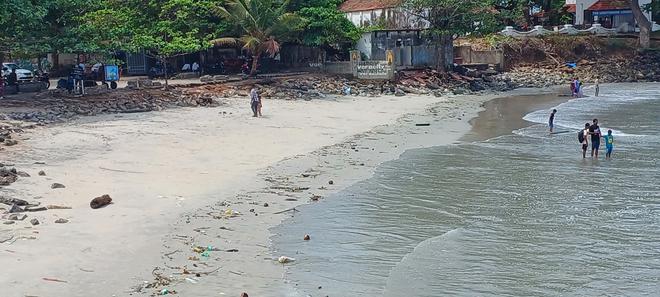With more people wanting to see the ‘fort’ on the Fort Kochi beachfront that saw the footfall of three colonial powers — the Portuguese, the Dutch and the English — history buffs are seeking steps to conserve the laterite-brick remnants of Fort Emmanuel that was built along the beachfront by the Portuguese in 1503.
The fort, which was a bastion of the Portuguese, is said to have begun from Bastion Bungalow, which is now a heritage museum, up to the southern end of the beach from where INS Dronacharya, Indian Navy’s gunnery school, begins. It is estimated that there were many bastions on the fort.
History has it that Fort Emmanuel was built as a symbol of the strategic alliance between the maharaja of Kochi and the monarch of Portugal, after whom it was named. By 1806, the Dutch and later the British destroyed most walls and bastions of the fort.
“Most remnants of the fort remain submerged along the coast, while visitors will be lucky if they get to see it when the waves subside,” says K.J. Sohan, heritage enthusiast and convener of the Kerala Chapter of INTACH and former Mayor of Kochi.
“The Dutch built bungalows atop the bastions that remained intact. Visitors often ask where’s the fort in Fort Kochi, not knowing that much of its remnants is now under the sea or are under buildings and bungalows that were built over the past couple of centuries,” he says.

Pointing to the area on the western side of Dutch Cemetery, Mr. Sohan hopes tourism and allied agencies of the government will excavate the area in order to unearth remnants of Fort Emmanuel. Visitors will benefit if a part of the fort’s remains is rebuilt using laterite bricks, similar to the ones that were used 500 years ago. A few pillar-like structures can be erected atop them using these bricks, that cand then be used as gateways to the beach, helping recreate memories of the fort in Fort Kochi, he says.
Portuguese strategy
Referring to forts that the Portuguese built in Fort Kochi and also in Goa, Kollam, Kozhikode and Kodungalloor, historian and former Chairman of the Kerala Council for Historical Research (KCHR) P.K. Michael Tharakan says it was part of their strategy, since their colonies were largely in coastal regions protected by forts.
“They also had a formidable navy, with cannons fitted atop the deck of ships. This gave them a decisive advantage in battles with the forces of, among others, the Zamorin of Kozhikode, Chhatrapathi Shivaji, and the Sulthan of Bijapur. While personnel of the other navies had to return to the land every night after battle, the Portuguese could fight even at night.”
From Kerala, they wanted to carry back to their homeland the best of pepper and other spices, and this type of fortification of colonies helped repel attacks. It is thus imperative to conserve the remnants of Fort Emmanuel on the Fort Kochi beachfront, as a reminder of the colonial strategy to control trade lines.
Much of the fort was dismantled by the Dutch in 1663, who defeated the Portuguese, Prof Tharakan says.







